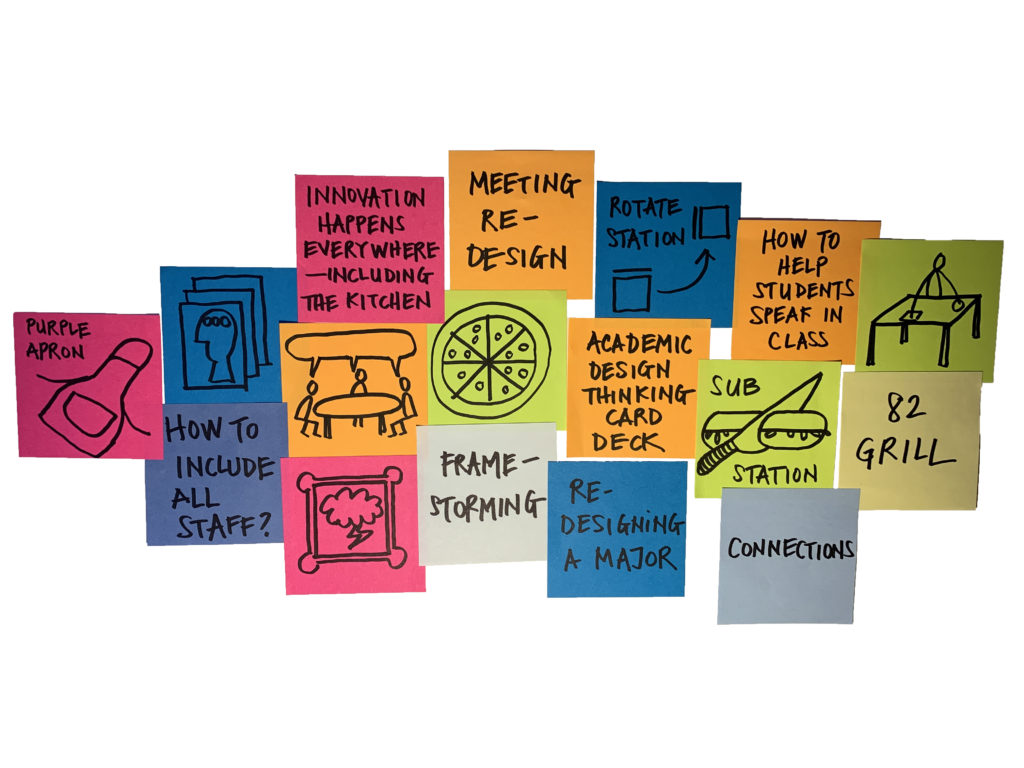
How can Design Thinking become a common language to enable innovation across campus?
We worked with a small liberal arts college in the northeast, already known for its academic excellence. The project was to teach Human-Centered Design to people from a variety of backgrounds, in one workshop:
- professors in the arts and sciences
- administrators
- student services staff
- students
- members of the local community.
Each area of the college is already doing wonderful work on its own. Could we help Design Thinking become a common language that would help faculty and staff appreciate each other’s expertise and collaborate on projects to benefit the college? We worked directly on the challenge of integrating the different parts of the college by focusing on one unit in particular and how it relates to other units. Our program participants spent time talking to the staff in this unit, and observing how they work together.
There was a lot of magic happening in this unit, and it was news to everyone! We spent time going over our observations and figuring out what the college could learn from the innovations in this one unit, and how the college could benefit from their innovations, and how we could help them with our own insights about how they work together.
Faculty contributed their deep insights alongside their teammates’ deep insights. Staff helped manage the workflow in collaboration with everyone else. Students and community members brought out-of-the-box ideas, matched by the creative ideas of everyone else on their team.
We prototyped several new uses of technology, organizational models, and services towards this human goal. Along the way, participants:
- learned how to make sure any new project will be a delight to the people involved in it, before committing resources to development and implementation.
- became personally aware of the deep expertise across the campus
- learned a new language in which to collaborate with the great minds around them.
One big challenge facing many groups after a workshop like this is: How do we use these tools now that the workshop is over? To build a bridge between the workshop space and everyday work, we:
- devised a deck of cards to inspire and guide faculty using Human-Centered Design specifically in higher education
- taught staff how to work with their team to figure out the right project to work on next
